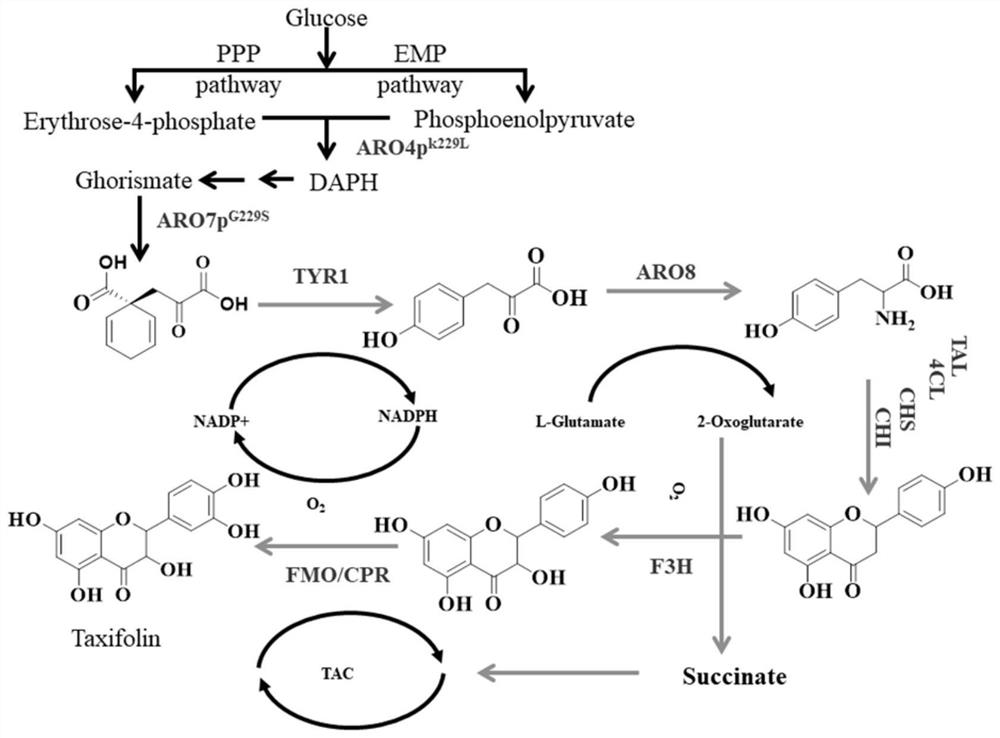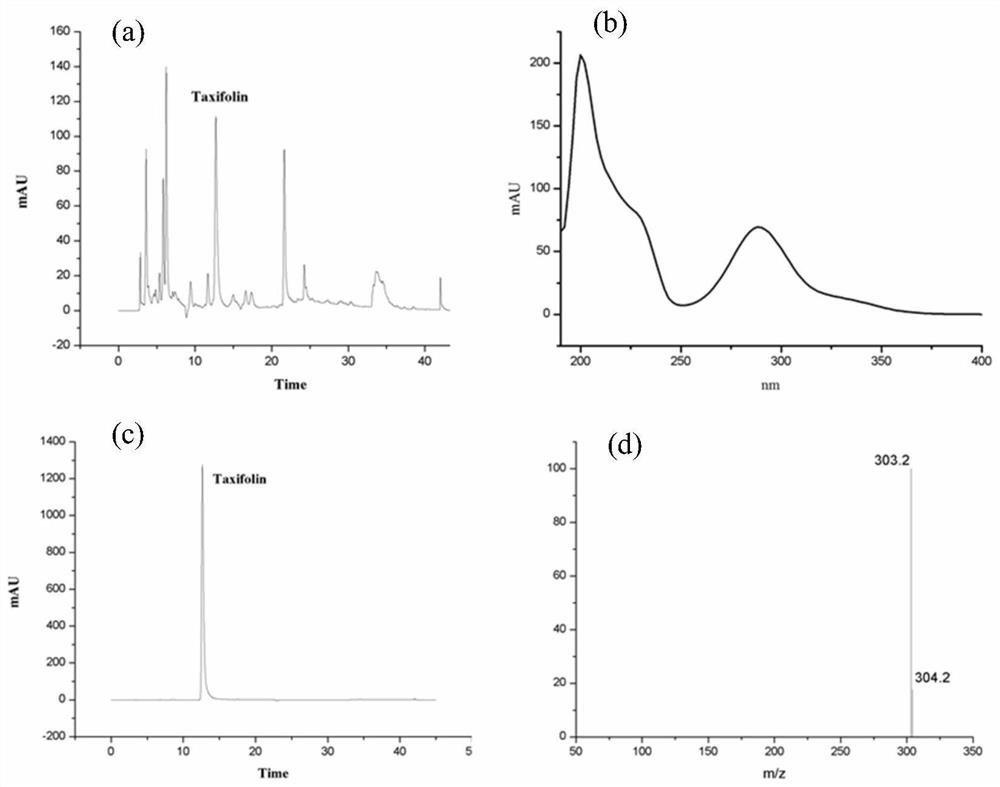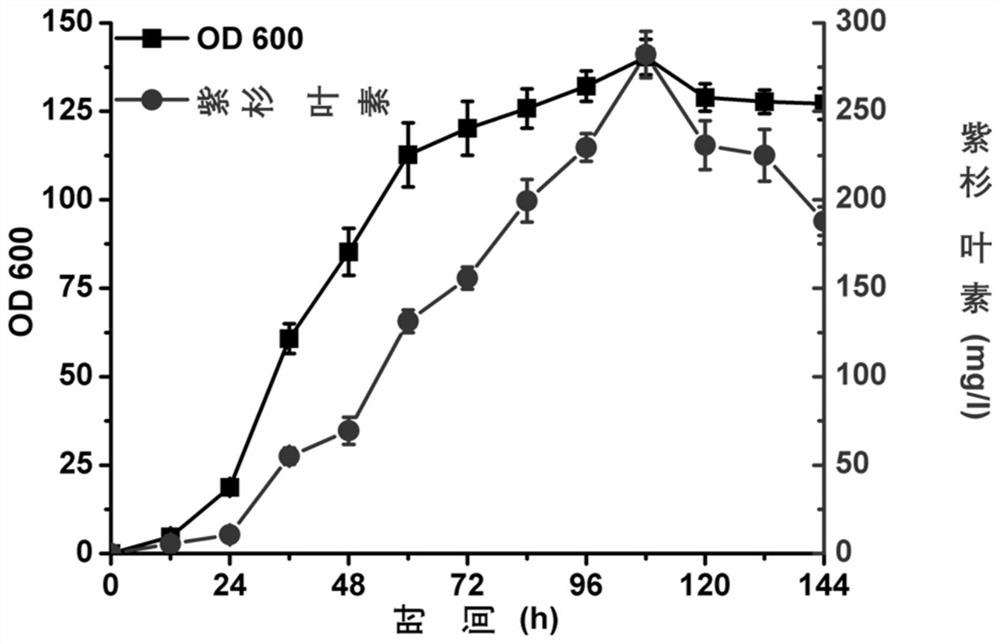Saccharomyces cerevisiae engineering bacterium with high yield of taxifolin as well as construction and application of saccharomyces cerevisiae engineering bacterium
A technology of Saccharomyces cerevisiae and taxifolin, which is applied in the field of metabolic engineering and fermentation, and can solve the problems of low taxifolin content, complex taxifolin structure, and difficult consumer acceptance of taxifolin
- Summary
- Abstract
- Description
- Claims
- Application Information
AI Technical Summary
Problems solved by technology
Method used
Image
Examples
Embodiment 1
[0116] The cloning of embodiment 1 yeast endogenous gene, promotor, terminator
[0117] 1. Extraction of yeast genome
[0118] (1) Pick a single clone of Saccharomyces cerevisiae BY4741 (purchased from ATCC) in 5 mL of YPD medium, culture at 30°C for 20-24 hours, then centrifuge at 4000 rpm for 5 minutes to collect the bacteria, and place them in a mortar.
[0119] (2) Quick-freeze in liquid nitrogen, grind, and after the liquid nitrogen evaporates to dryness, add 1 mL of DNAiso Reagent (Baoriyi Biotechnology Co., Ltd.), and mix well.
[0120] (3) Transfer the lysate to a centrifuge tube and centrifuge at 12,000 rpm for 10 min at 4°C or room temperature.
[0121] (4) Transfer the supernatant to a new centrifuge tube, add 1 / 2 volume of absolute ethanol, mix well, centrifuge at room temperature at 4000 rpm, and remove the supernatant.
[0122] (5) Wash the precipitate twice with 75% (v / v) ethanol, evaporate the residual ethanol, add 50 μL ddH 2 O was dissolved and used as a t...
Embodiment 2
[0148] Embodiment 2, the cloning of the gene of plant origin
[0149] 1. Extraction of Plant Tissue RNA
[0150] The total RNA in the leaves of Arabidopsis thaliana (Arabidopsis thaliana can be commercially purchased) was extracted using the Rapid Universal RNA Extraction Kit (Beijing Huayueyang Biotechnology Co., Ltd.). The specific operation process is shown in the instruction manual.
[0151] 2. Reverse transcription of mRNA into cDNA
[0152] The Hiscript II Reverse Transcriptase Kit (Nanjing Novizan Biotechnology Co., Ltd.) was used to reverse transcribe the RNA into cDNA. For details, see the kit instruction manual.
[0153] 3. Cloning of the target gene
[0154] Using Arabidopsis cDNA as a template to clone 4CL1 (primers 4CL1-F and 4CL1-R), F3H (primers F3H-F and F3H-R), F3'H (primers F3'H-F and F3'H-F), CPR (primers CPR -F and CPR-F) genes, primers are shown in Table 1, and specific implementation methods can refer to Example 1. Among them, the nucleotide sequence ...
Embodiment 3
[0159] Embodiment 3, the construction of each expression module and related plasmid construction
[0160] 1. Construction of gene expression modules by overlapping PCR
[0161] (1) Each module is constructed by overlapping PCR technology, and each connected fragment in the module is cloned by PCR, plus a 40-50 bp overlapping region, and the base annealing temperature in the overlapping region is between 60 and 70 °C.
[0162] (2) The first round of reaction system: Phanta Max Super-Fidelity DNA Polymerase 0.5 μL, dNTP (10mM) 0.5 μL, 2x Phanta Max Buffer 10 μL, DNA fragment 1-5 μL, upstream and downstream primers 0.5 μL each (see Table 2), ddH 2 O to 20 μL; wherein the primer sequences are shown in Table 2.
[0163] The first round of PCR reaction conditions: 95°C for 3min; 95°C for 30s, 60-70°C for 30s, 72°C for 1-4min, 15 cycles; 72°C for 7min.
[0164] (3) The second round of PCR: take 1 μL of the first round of PCR reaction solution as the second round of PCR template, t...
PUM
 Login to View More
Login to View More Abstract
Description
Claims
Application Information
 Login to View More
Login to View More - R&D
- Intellectual Property
- Life Sciences
- Materials
- Tech Scout
- Unparalleled Data Quality
- Higher Quality Content
- 60% Fewer Hallucinations
Browse by: Latest US Patents, China's latest patents, Technical Efficacy Thesaurus, Application Domain, Technology Topic, Popular Technical Reports.
© 2025 PatSnap. All rights reserved.Legal|Privacy policy|Modern Slavery Act Transparency Statement|Sitemap|About US| Contact US: help@patsnap.com



